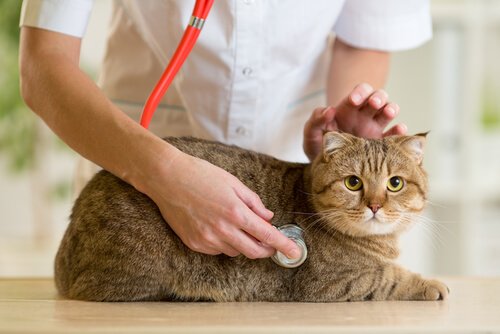New Cat at Home: How to Avoid Problems with Other Cats

One of the biggest problems a pet owner may run into happens when they introduce a new cat into the home. Why? Because if you already have other cats, they’ll have a difficult time getting along at first.
Cats aren’t like dogs. Felines are very territorial. This means that they won’t want to share their home with others.
Although there are some cases in which felines have easily assimilated to the presence of others, there are other cases where coexistence is complicated. That’s why we’ll use this article to explain what to do if you happen to come across this problem.
Take your new cat to the vet

This is the first thing you should do before you bring your new cat home. This will ensure that they’re healthy and won’t be a threat to anyone.
The first thing the vet should check is if they have any fleas or parasites. If your cat does have any of them, then the vet can prescribe any necessary treatments.
Also, this check-up will prevent any of the felines that already live in your home from catching a disease from the new cat.
One of the diseases you should look out for is feline immunodeficiency. Even though this disease doesn’t have an effective cure, detecting it is extremely important to prevent it from spreading to other kittens.
Separate the cats
Once the vet tells you that your pet is healthy, it’s time to take him home and introduce him to the family.
However, you’ll have to be very careful with the cats you already have at home. That’s because older cats can react aggressively to their new companion.
In order to prevent any unwanted situations, you should give the newcomer a separate room. This space should be safe and as far away as possible from the other cats.
Also, you should make sure that this area isn’t one of the older cat’s favorite places. This will keep them from feeling anxious and wanting to enter each other’s area.
You should keep this separate environment tactic going for at least a week. During that time, the felines will get used to one another.
Adapt the new cat to your other cats’ smells and vice versa
This is another step that you’ll have to take in order to give your new cat a good living environment. The first thing you should do is let your new cat play with the other cats’ toys, and vice versa.
You can also rub a towel on the sweat glands on the cheeks of your new cat. Then, give it to the others to sniff and to help them adapt to the new cat’s smell.
Once you’ve done all this, leave the new cat’s room door open so your cats start smelling each other. This will help prevent problems in the future.
Hold your new cat in your arms when introducing him to the others
In order to start establishing greater contact, the best thing to do is to hold the cat in your arms while introducing them to their new companions.
The best way to do this is to sit on your sofa so that the other felines can approach and touch them. Since they’re protected in your arms, you’ll prevent him from getting hurt.
The introduction phase shouldn’t last any longer than 5 days. This will be more than enough time for your cats to get used to the newcomer’s presence.
Let the new cat and the other cats spend time together

At this time, the only thing left to do is to let them get to know each other. First, let them eat at a relatively close distance.
Once you notice there aren’t any more problems, let them spend more time together. This will help the felines share and accept the new cat as one of their own.
You should also be present when they are spending time together. Not only will this help you ensure there aren’t any problems, but you’ll make them happier by playing with them.
If you follow all of these steps, your new cat will easily integrate into the family.